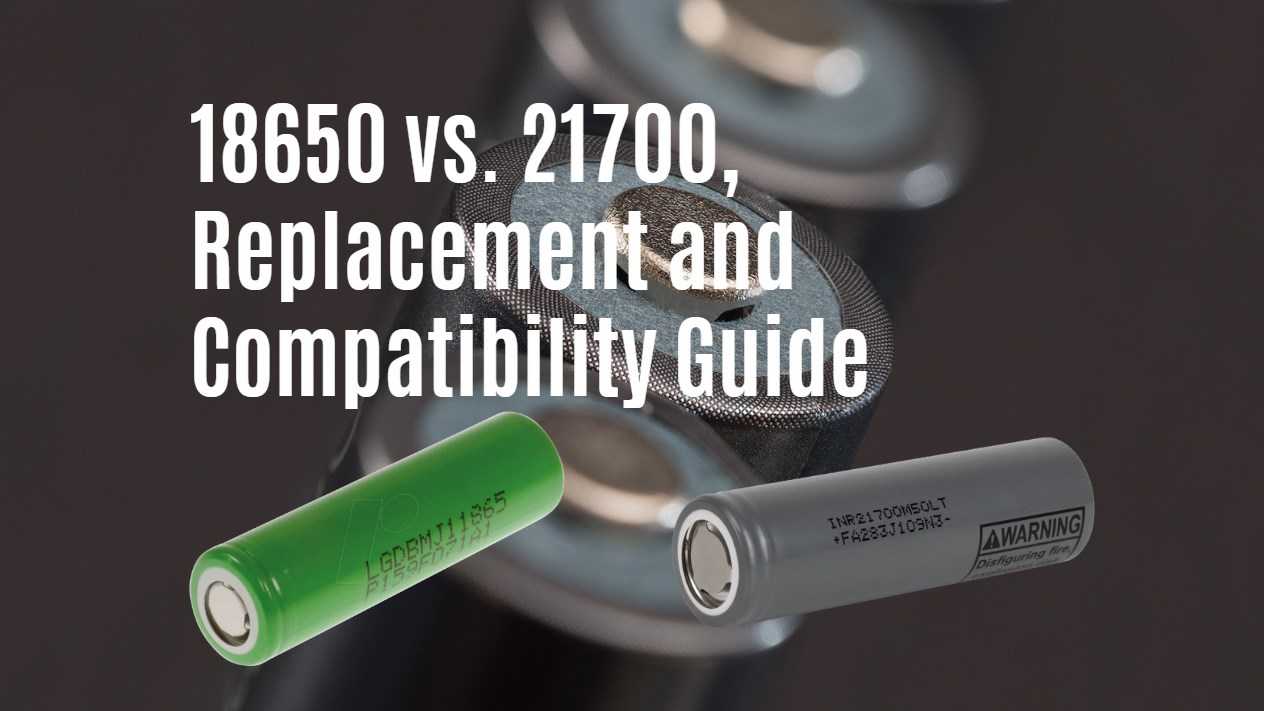18650 vs. 21700, Replacement and Compatibility Guide
The 18650 and 21700 batteries differ in size and capacity. The 21700 battery is larger, providing more capacity (typically around 3000-5000mAh) compared to the 18650 (1500-3500mAh). While both can be used in similar applications, ensure device compatibility before replacing.
When it comes to lithium-ion batteries, the 18650 and 21700 cells are two of the most popular formats used in various applications, from electric vehicles to power tools. Understanding their differences, advantages, and compatibility is essential for making informed decisions for your specific needs.
Key Specifications
- Size:
- 18650: 18mm diameter x 65mm length
- 21700: 21mm diameter x 70mm length
- Capacity:
- 18650: Typically ranges from 1800mAh to 3600mAh.
- 21700: Generally offers capacities between 3000mAh and 5000mAh.
- Energy Density:
- 18650: Approximately 250Wh/kg.
- 21700: Around 300Wh/kg, providing nearly a 20% increase in energy density.
Advantages of Each Battery Type
Advantages of the 18650 Battery
- Proven Technology: The 18650 format has been around since the early 1990s and has a well-established market with numerous manufacturers.
- Cost-Effectiveness: Due to its widespread use, the cost per watt-hour is generally lower compared to newer formats.
- Better Heat Dissipation: The design allows for efficient heat dissipation, making it suitable for applications where temperature management is critical.
Advantages of the 21700 Battery
- Higher Capacity: With a maximum capacity of up to 5000mAh, the 21700 can provide longer run times for devices requiring more power.
- Improved Performance in High-Drain Applications: The larger size allows for higher discharge rates, making them ideal for power tools and electric vehicles.
- Fewer Cells Required: Using larger cells means fewer individual cells are needed in battery packs, simplifying assembly and potentially increasing reliability.
Compatibility Considerations
While both batteries serve similar functions, their physical differences mean they are not directly interchangeable:
- Physical Size: The larger dimensions of the 21700 may not fit in devices designed specifically for the 18650 without modifications.
- Battery Management Systems (BMS): Devices designed for one cell type may require different BMS configurations when switching to another type due to differences in voltage and capacity management.
Applications
- 18650 Batteries:
- Commonly used in laptops, flashlights, e-cigarettes, and older electric vehicles.
- 21700 Batteries:
- Increasingly used in newer electric vehicles (like Tesla), high-performance power tools, and advanced consumer electronics.
Latest Trends
- Shift in Industry Preferences: As technology evolves, manufacturers are increasingly favoring the 21700 format due to its higher capacity and efficiency. This trend is evident in electric vehicle batteries and high-drain applications.
- Cost Reductions: The production costs of the 21700 cells are expected to decrease as manufacturing processes improve and economies of scale are realized.
Redway Expert Comment
“Choosing between the 18650 and 21700 batteries depends largely on your specific application requirements. At Redway Battery, we see a growing demand for the higher capacity and efficiency offered by the 21700 cells, especially in high-performance environments. However, for applications where space is limited or cost is a primary concern, the reliable and well-established 18650 remains a strong choice.”
Conclusion
In summary, both the 18650 and 21700 lithium-ion batteries have unique advantages that cater to different needs. While the newer 21700 offers higher capacity and efficiency, the established reliability of the 18650 makes it a viable option for many applications. Understanding their specifications and compatibility will help you make an informed choice tailored to your specific requirements.

